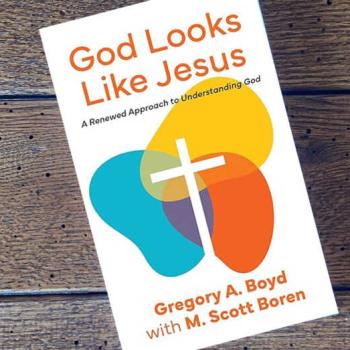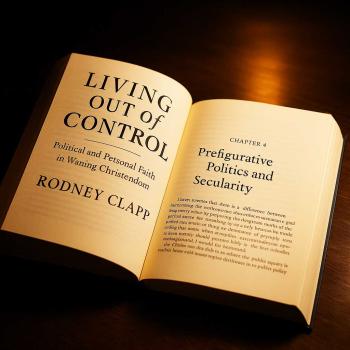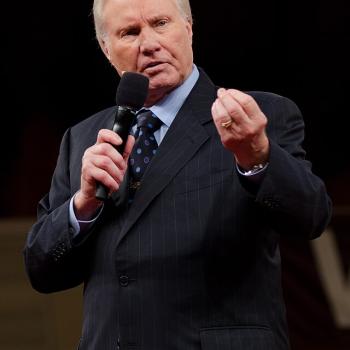About the Handbook of Denominations in the United States (14th Edition)

(Note: This book, of which I am one of the authors, is now available for purchase. The publisher is Abingdon Press and following essay (which I wrote) about the volume is being published in the United Methodist publication “Ministry Matters.” I use it here with permission by the United Methodist Publishing House.)
I have always been intensely interested in denominations. I grew up in one that claimed it was not a denomination; it claimed to be a “movement” and a “fellowship.” One day when I was a teen I browsed through my father’s pastoral library and came across the Handbook of Denominations in the United States. I don’t remember which edition it was; I only remember that the dust jacket was yellow and the author was someone named “Mead.” Much to my surprise and some dismay I found our “movement” listed and described as a denomination. When I confronted my father he responded that the Handbook was wrong but also right.
I’m not exactly certain how much weight that particular incident carried in shaping my lifelong interest in denominations—especially ones that claimed not to be denominations! There were other catalysts of this lifelong near-obsession. One of my uncles was a missionary who belonged to a Christian group my parents and others said was not really Christian at all. I couldn’t find it in the Handbook and my uncle wouldn’t talk about it. I became obsessed with knowing more about his group—which also, like ours, claimed not to be a denomination.
For whatever reason, I developed a profound interest in American Christian groups—whether they admitted to being denominations or denied that status. I read all that I could get my hands on and kept up a lively study of the various editions of this Handbook as they were published.
Along the way I noticed a few errors in the Handbook and wrote to the publisher. The publisher and I met and I gave him a long list of recommended improvements. Eventually I became a consultant to the editor and now, with the 14th edition, the editor. I have revised and updated the Handbook extensively. For me, serving as editor of this reference volume (which I believe belongs in every church’s and pastor’s library) is a dream come true.
One challenge I faced was the growing aversion to the term “denomination” in American church life. Many say we live in a “post-denominational age.” Many churches hide their denominational affiliation. And yet there are more denominations now than ever!
Of course, much depends on how one defines “denomination.” For the purposes of this Handbook I define it as any group of Christian congregations with “connective tissue”—however weak that may be. This isn’t really new; scholars of American religion have always treated Churches of Christ, for example, as a denomination even though they have no headquarters or hierarchy. Each Church of Christ (non-instrumental) is independent and can do whatever it chooses to do. The only connective tissue is fraternal association. The same can be said of many other denominations; a group of congregations does not have to have an authority structure over them to count as a denomination.
There is a great deal of confusion and misunderstanding about the term “denomination” in America today and one contribution I hope this volume makes is to de-mystify that concept and clear up confusion about it. It is certainly no insult to call a group of churches a denomination even if they prefer not to use the term for themselves.
The most preferred term these days is probably “network.” One group of Baptist congregations calls itself a “denominetwork”—a new term. Many newish groups of Christian congregations (and some older ones) have adopted new language for themselves. The term “denomination,” however, remains the one preferred by students and scholars of American religious life. Rather than discard it because it is widely misunderstood I have chosen to include in the 14th edition of the Handbook an essay explaining its meaning and defending its continued use.
American religious life is fascinating and one of its most fascinating features is the diversity of denominations (whatever their adherents and leaders prefer to call them). Diversity is generally applauded—especially in scholarly and academic circles—except when it comes to Christianity. Then, for some reason, many people suspect diversity of being sinful.
The diversity of Christian denominations, however, is widely misunderstood. Much of it has to do with ethnic roots, preferred worship styles, regional differences, and secondary doctrinal particularities and emphases. The fact that one church baptizes infants by sprinkling while the one down the street baptizes only more mature believers by immersion does not necessarily mean they are at odds with each other. Sure, they disagree about who should be baptized and how, but they probably agree about much more and matters more important to both of them. Their separate existence does not necessarily imply hostility or even competition. Many such congregations of different traditions cooperate.
Some scholars believe one of the reasons for the vitality of American Christianity is its diversity. People are different; it’s not unnatural or negative that they want to worship in different ways or that they have different opinions about secondary matters of doctrine. That people living in relatively sparsely populated areas of the United States have choices in matters religious is good—so long as they do not shun each other or damn each other to hell just because of their churches’ differences. In most cases they do not.
The Handbook of Denomination in the United States has long served as an aid to people wanting to understand their Christian neighbors, the “church down the street,” or the roots of and reasons for the several denominations in their town. It has some very practical uses for ministers especially. A minister accepts appointment or call to a church in a new locale; he or she is approached by another minister of longer tenure there to cooperate in an ecumenical venture. The new minister wants to know something about the inviting minister’s denomination. The Handbook has always served as a place to begin. It will continue to serve purposes arising from curiosity and practicality.












